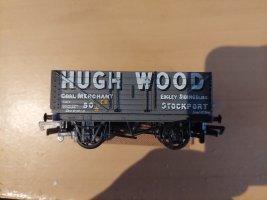It seems a lower power makes a narrower kerf,
Hi martin,
In my honest opinion that video is a little bit deceptive,
to start with when it comes to laser kerf I have found it best to envisage a taper milling tool of say 10 degrees inclusive angle. The point being the deeper you cut into the work piece in a single pass the wider the gap is at the top in relation to the gap at the bottom.
It is also true more powerful machines also do have a bigger laser point, analogist to a bigger taper cutting tool.
This seems to be a side effect of the number of prisms used to concentrate all the LEDS.
Multi passes have the strange effect of starting the cut again, thus you get a sort of saw tooth shape rather then a true vee shape.
Although this is not happening in reality, its similar in milling parlance to doing a shallow cut, then stepping the tool out further from the cutting path before dropping the z axis. Hence the saw tooth analogy. This is the reason so many people say multi passes are more accurate than a single pass.
Cut depth and cut speed are also important considerations, it follows that more power therefore allows for both deeper and faster cutting.
Just like cutting with a machine tool there are optimum feeds, but unlike a machine tool the feed is related to the power of the laser not the cutting rotation speed or number of teeth on the cutting tool.
The other thing which is very important, is the correct focal point, its generally acknowledged for cutting, the correct value should be with the focal point set at exactly 1/2 the thickness of the work and for engraving the focal point should be on the top of the work to be engraved.
what is less understood is the stated value of the manufacture is really only a general guide. This becomes even more hit and miss with such a crude setting device as that shown in the video.
A very good way to check the correct focal point although quite complicated to set up, is to have a test piece of wood at a known angle say 4 mm height difference over a 300 mm length of the test piece. Then by running straight line cut you can actually see the kerf will go from wider to narrower and then wider again.
The narrowest point being the optimum focal height. the only problem is accurately working out what height the laser head was above the work piece at that time. This is best done by not move the z height at all once the cut is complete, don't move the test piece either, simply observe the narrowest point and mark it. then move the laser back over the mark and measure from this mark to say the underside of the safety shroud, by using a known block size and feeler gauges. once you have this value thats your optimum focus at the top of every work piece.
If you have lightburn which is about the best laser control software there is, A key tool for starting and understand you new laser is the Material test Generator. You do this only after find the optimum focal point of your laser however.
I know experienced users often don't use this tool, but that is simply because they have enough experience to start beyond this key test tool. In truth it is simply a matrix grid where the speed and power can be increased in steps, the idea being once completed you check the test piece by both measurement and visually, and simply use the setting that both look and measure out the best.
All that said for cutting wood up to say 4 mm thick then the most cost effect options are very much the machines in the 10 to 22W power range. More power only really gives you more speed, and potentially more longer term problems.
For engraving (not so much part etching) much faster speeds are better, so more powerful lasers can come into there own.
The real key is once you have a laser, quite a bit of playing around first is required if you want to get the very best out of your machine.
cheers
Phil,
 Search
Search

